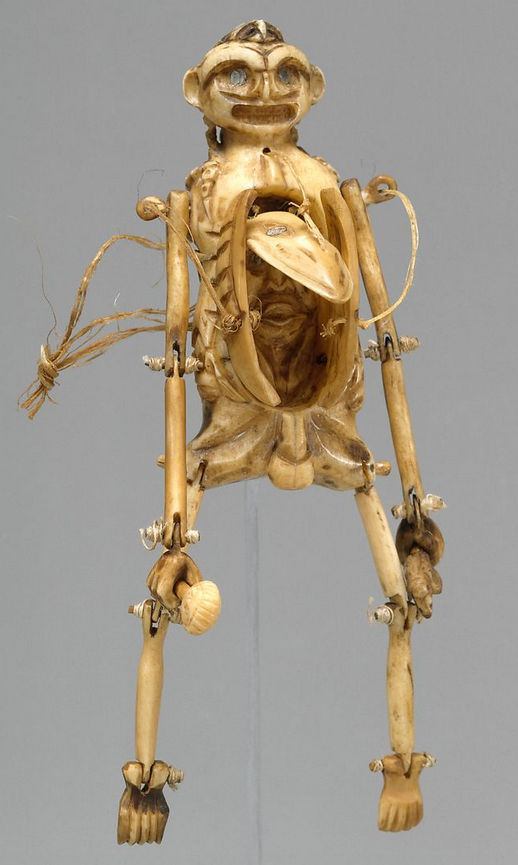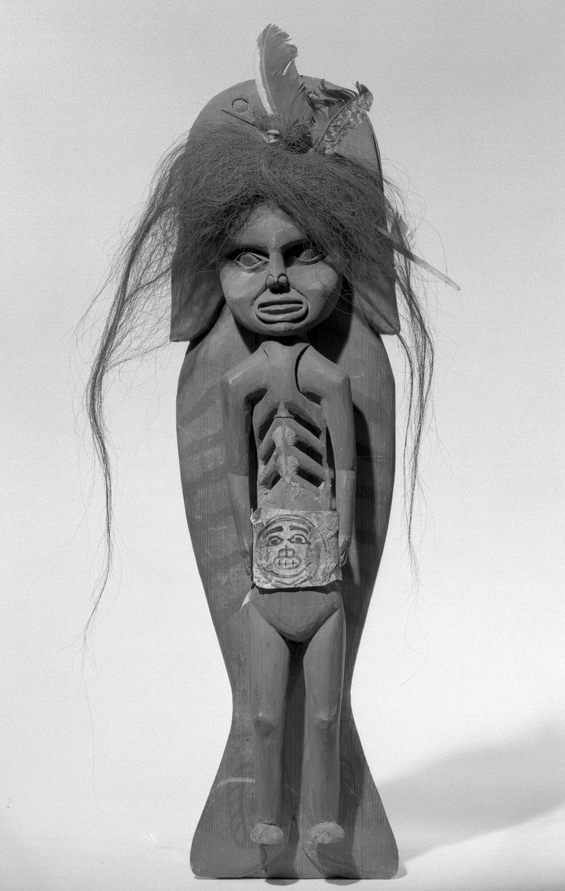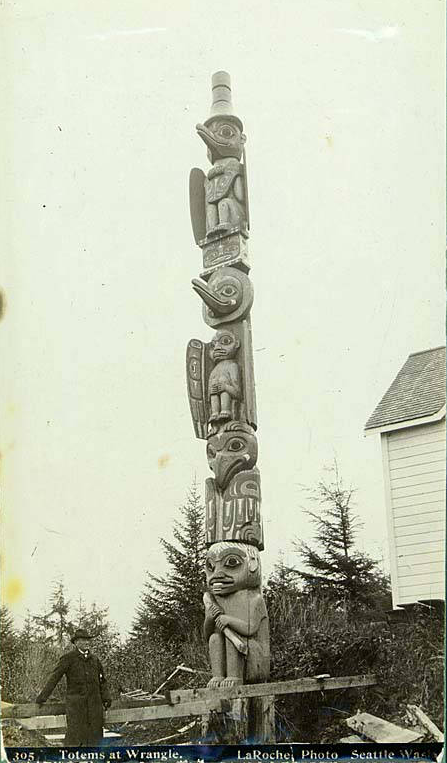In this blog, we are traveling to southeast Alaska. The puppets of the Native Americans of the Pacific Northwest Coast were very elaborate and more varied than the puppets of both the northern region of the United States and Arctic Alaska. The ceremonies were also huge productions.
Since I am enthralled about how the ancient Native Americans used puppets, I am focusing on what information I could find for the time period before Europeans started to really take over the new world. Around the end of the 19th century, eyewitness accounts by guests attending a ceremony reported seeing a wide variety of puppets in action. There were animated puppet birds that appeared to be flying due to strings that were hung over the rafters. Other birds descended through the smoke hole in the roof. A salmon puppet jumped out of water and a canoe pulled a whale puppet. Frogs and ducks on rollers were pulled along the ground with strings. Crabs had jointed claws and legs. By the use of control strings, hidden human type puppets popped up on cue from the boxes hidden underground. Large human figures with moving joints did complex movements. like striding across the performance area. One such figure had flaps on its chest that opened to reveal a hidden inner image. Maybe it looked similar to the Transformation Doll pictured below.
The flickering fire in the center of the huge ceremonial room created shadowy corners. These corners made the strings and puppet operators virtually invisible. Miraculous appearances and disappearances were possible due to underground tunnels. Shamans jealously guarded the secrets of how the puppets and masks worked in order to increase their influence over the audience. In the past, anyone who revealed the secrets could have been put to death.
The Yakutat Tlingit Tribe Mythology
The Yakutat Tlingit Tribe’s traditional territory is the Southeastern Alaska panhandle. It extends from Yakutat south to Ketchikan and includes the Alexander Archipelago.
According to Tlingit mythology, animals were once humans who were frightened into the woods and the sea by the daylight that Raven let out of a box. Traditional Tlingits believed that people and animals are relatives who can cross into each others’ worlds. Animals have the ability to appear before people in human form and to interact with them in meaningful ways.
Transformation Doll
The photo below is of a Transformation Doll. I wasn’t able to find out any information about how it was used. It does have string attached to the shoulder and the joints move. It also has a flap that opens on the chest and if you look closely you can see an image carved on the back. It is a beautiful and intricately carved piece of art.

Shaman Riding on the Back of a Killer Whale
Below is a photo of a piece titled Shaman Riding on the Back of a Killer Whale from 1834-1867. Both of these pieces spark my imagination about who made them, their meaning and what were they used for.

Tlingit Totem Pole

I know that totem poles aren’t puppets but I had to include this totem pole picture taken around 1897. Totem poles weren’t worshiped. They were created to tell a legend, myth or story. They were also created to commemorate special events such as births, marriages and other important life cycle events. I’ve included it in this post because it is pre-20th century and it shows the incredible carving talent of the Tlingit people. Even though the picture is in black and white, I bet it was painted brilliant colors similar to the totems we see now. To me, every piece of art whether it’s a puppet or not gives us clues about the people who created it.
